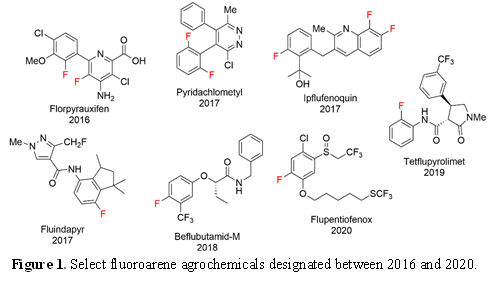Division of Research & Innovation
Modifying Fluorinated Aromatics with a Chromium Catalyst
Developing a new, efficient method to incorporate fluoroarene molecules into other organic compounds.
The Brewster Lab is developing a new, efficient method to incorporate fluoroarene molecules—key ingredients found in most pesticides, herbicides, and insecticides—into other organic compounds. Traditionally, adding fluoroarenes to complex chemicals requires a method called “cross-coupling.” This method uses an extra “leaving group” molecule to make the reaction happen at a specific location on the fluoroarene. However, this process is costly because the leaving group creates waste and requires multiple steps to prepare.
The team’s new approach uses a special chromium catalyst that activates the hydrogen atoms (instead of a leaving group) on fluoroarenes, making them easier to bond with other chemicals. This method specifically targets the C-H bonds near the fluorine atoms, making the reaction more precise and minimizing waste. If successful, this technique could significantly reduce production costs in the agrochemical industry, where pesticides and similar products are made in large volumes with small profit margins per unit.

For more information on this project, contact Dr. Timothy Brewster, associate professor in the Department of Chemistry, at tbrwster@memphis.edu.
